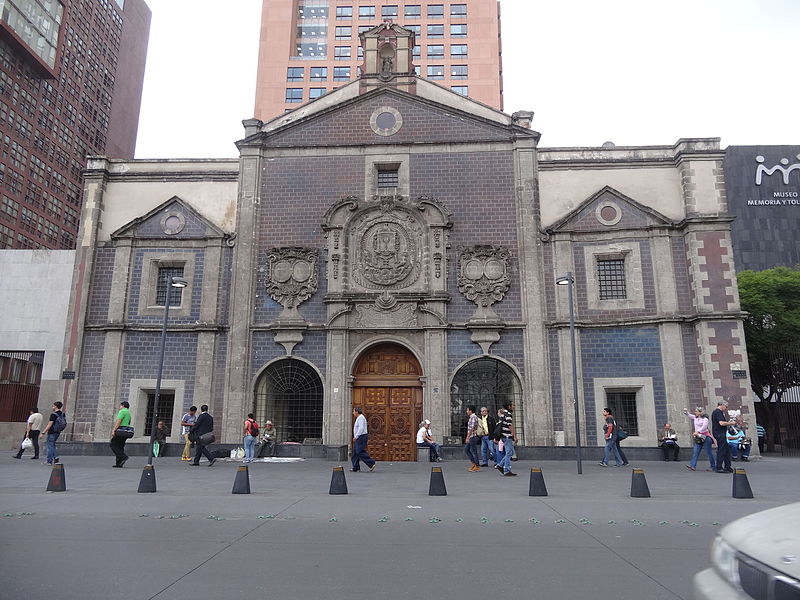
科珀斯克里斯蒂神庙(Corpus Christi Temple)是面向阿拉米达市中心的建筑中游客人数众多的一处建筑。这里最初是一座天主教神庙,属于科珀斯克里斯蒂修道院。这个区域目前由墨西哥外交部(Secretariat of Foreign Affairs)大楼占用。该建筑群包括记忆与宽容博物馆(Museum of Memory and Tolerance)。科珀斯克里斯蒂修道院和神庙都是由嘉布遣会穷克莱尔(Order of the Capuchin Poor Claires)赞助管理。重要的是,这里是第一座土著女性修道院。如今,这里收藏着墨西哥城土地公证人的历史档案。
1720年至1724 年间,著名建筑师Pedro de Arrieta建造了科珀斯克里斯蒂修道院和神庙。他放弃了当时修道院教堂典型采用两个入口的做法。据说,这是源于为他在1720年至1721年间建造灵魂礼拜堂(Chapel of the Souls)的影响。(灵魂礼拜堂就在大都会大教堂后方)
科珀斯克里斯蒂修道院专为当地贵族的女儿而建。1867年,第二帝国(Second Empire)成立,随着改革法(Reform Laws)的实施,这片区域被腾空。1895年起担任Porfirio Díaz领导下的财政部长José Ives Limantour购买了这里,他下令拆除修道院,只保留了神庙和一座小回廊。
世俗化运动之后,科珀斯克里斯蒂神庙先后用作酒厂、分裂教会寺庙和卫生博物馆。1951年,科珀斯克里斯蒂神庙被移交给新成立的国家土著研究所(National Indigenous Institute),以建立工业和流行艺术博物馆。一直到20世纪80年代,科珀斯克里斯蒂神庙都屹立不倒。1985年,一直到20世纪80年代在地震中严重受损,废弃了将近20年。2002年,历史中心救援项目启动,科珀斯克里斯蒂神庙有机会得到巩固和修复,最后成为墨西哥城公证人总档案馆历史收藏的总部。巩固和修复工程于2003年开始,藏品于2005年开放。
如今,虽然这里没有向公众开放,但大家可以在阿拉米达市政中心一览科珀斯克里斯蒂神庙的外观。从这里出发,步行即可轻松到达阿拉米达市中心众多景点以及南边紧邻的圣胡安莫约特兰社区。
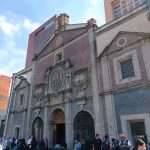 In 1720, the Viceroy Marquis of Valero hired the famed architect Pedro de Arrieta to build a temple and convent dedicated to women of indigenous origin. This fact was remarkable, since indigenous peoplewere considered "new Christians" and therefore were excluded from priestly orders and monastic life. Two centuries after the beginning of the Christian evangelization in New Spain, the daughters of indigenous caciques were able to enter the convent of the Poor Clares of Corpus Christi. These foundation gave rise to the convents of Oaxaca and Morelia.
In 1900, the old temple was redecorated by Emilio Dondé, in 1920 the vestiges of the convent were demolished, leaving the church exempt. In 1942 a Hygiene Museum was inaugurated there. In 1971, this became the Museum of Popular Arts and ia mural was executed in the high choir of the old temple. The work of Miguel Covarrubias, it represents a map of Mexican handicrafts.
It is currently the headquarters of the Historic Archive of Notaries of Mexico City within a complex of administrative buildings built between 2001 and 2004.
In 1720, the Viceroy Marquis of Valero hired the famed architect Pedro de Arrieta to build a temple and convent dedicated to women of indigenous origin. This fact was remarkable, since indigenous peoplewere considered "new Christians" and therefore were excluded from priestly orders and monastic life. Two centuries after the beginning of the Christian evangelization in New Spain, the daughters of indigenous caciques were able to enter the convent of the Poor Clares of Corpus Christi. These foundation gave rise to the convents of Oaxaca and Morelia.
In 1900, the old temple was redecorated by Emilio Dondé, in 1920 the vestiges of the convent were demolished, leaving the church exempt. In 1942 a Hygiene Museum was inaugurated there. In 1971, this became the Museum of Popular Arts and ia mural was executed in the high choir of the old temple. The work of Miguel Covarrubias, it represents a map of Mexican handicrafts.
It is currently the headquarters of the Historic Archive of Notaries of Mexico City within a complex of administrative buildings built between 2001 and 2004.
Heart of México Walking Route: Alameda - Madero
< < Juárez Hemicycle | Palacio de Bellas Artes > >
Proyecto “Corredor de Cultura Digital”.
Nombre de la investigación: Investigación Centro Histórico, Monumentos, Edificios y Puntos de Interés (2023)
Dirección de investigación y diseño de Rutas: Acércate al Centro A.C. Guadalupe Gómez Collada
Coordinación e investigación histórica: Fideicomiso del Centro histórico Dir. Maestra Loredana Montes
 55 5518 1475
55 5518 1475
 http://data.consejeria.cdmx.gob.mx/index.php/dgjel/archivo-general-notaria
http://data.consejeria.cdmx.gob.mx/index.php/dgjel/archivo-general-notaria
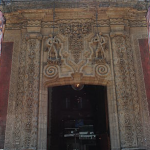
Among the strongest places to see historical and colonial period art works . . .

Bellas Artes has long been an iconic symbol of Mexico City's culture and performing arts.
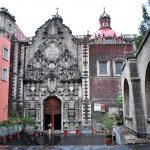
One of the oldest places on today's calle Madero, the temple is only accessible through a remaining side chapel.
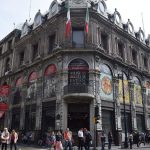
One of the most eclectic of museums, at home in one of the most dynamic of late 19th century buildings.
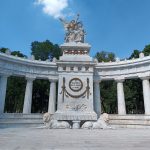
The Benito Juarez monument is just one of the most prominent points of interest in the Alameda Central.